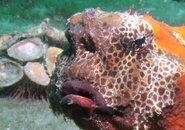I am an inexperienced diver with 48 dives. Most on wrecks in south Florida and in the Gulf with half a dozen drift dives on reefs and a couple in quarries. I am have no illusions that I am ready to add a camera and another task to my dives just yet, however, I am going to Bonaire in July for 8 days. I have wished on several occassions that I had some type of camera on some of my dives and I can't imagine going to a place like Bonaire without one. I also ASSUME Bonaire is going to be a great place to not only have great photo ops but also should be perfect for practicing underwater photography with its unlimited shore diving and freedom to dive where, when and how long I want to.
I have almost decided to get the SeaLife DC1200 Elite package since it has the external flash and wide angle lens included at a reasonable price. I realize this is not the most high speed rig but I guess I am wondering if this set up will last me several years as I learn and gain experience or if there are other options I have not discovered.
FYI. My digital camera experience is limited to a Nikon 3000 I have to use at work, a Nikon CoolPix at home and a HD Flip Slide video at home. I am by NO means good a taking photos but I am dying to take pics on my dives.
I am thick skinned so PLEASE be honest with your advice. If your advice is to simply not jump into photography yet then so be it. If you have other camera suggestions I am all ears. I can't go much past the price of the DC 1200.
Thanks in advance.
Buck
I have almost decided to get the SeaLife DC1200 Elite package since it has the external flash and wide angle lens included at a reasonable price. I realize this is not the most high speed rig but I guess I am wondering if this set up will last me several years as I learn and gain experience or if there are other options I have not discovered.
FYI. My digital camera experience is limited to a Nikon 3000 I have to use at work, a Nikon CoolPix at home and a HD Flip Slide video at home. I am by NO means good a taking photos but I am dying to take pics on my dives.
I am thick skinned so PLEASE be honest with your advice. If your advice is to simply not jump into photography yet then so be it. If you have other camera suggestions I am all ears. I can't go much past the price of the DC 1200.
Thanks in advance.
Buck





